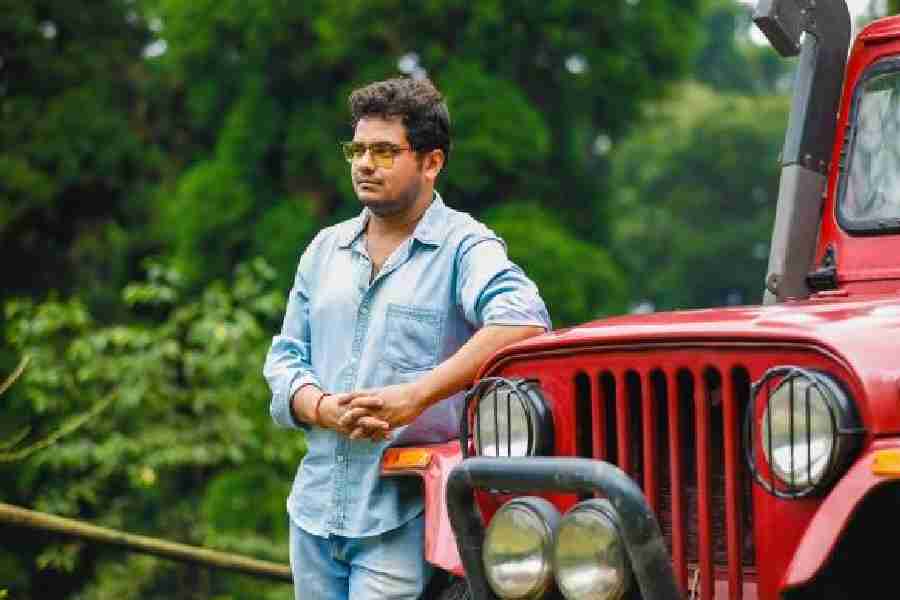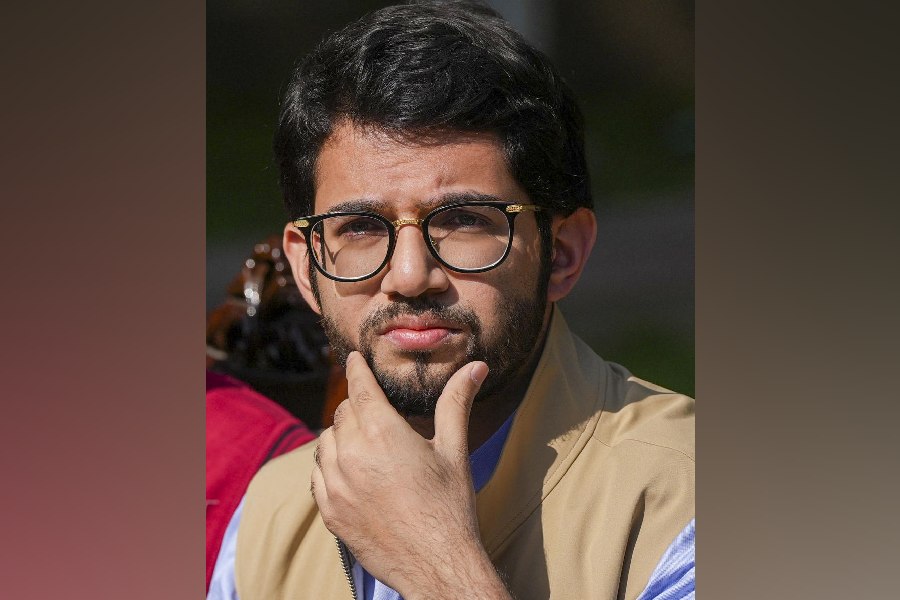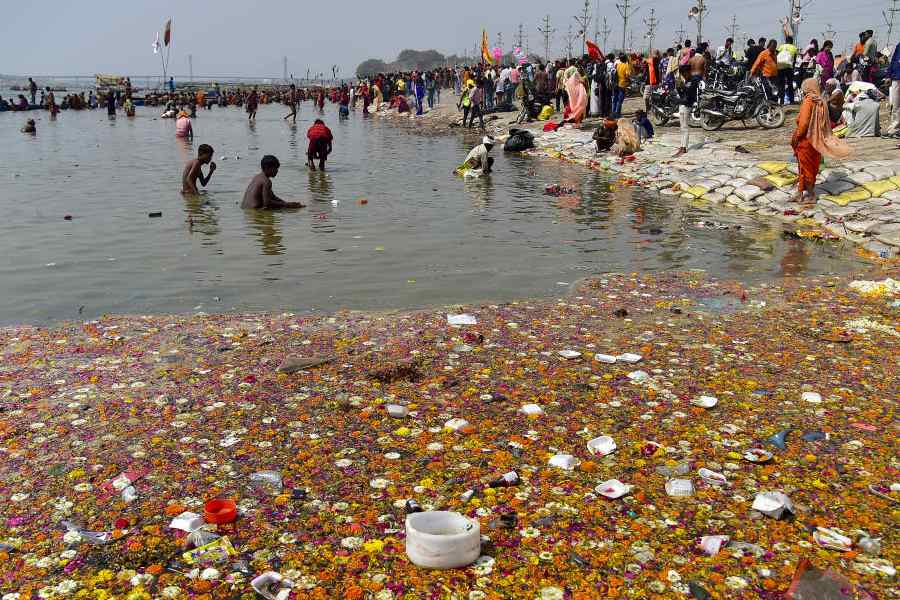Saptaswa Basu’s series Dibakarer Odbhut Canvas, streaming on the Aaro Ananda app and the Aaro Ananda website, tells the story of Dibakar, a painter who comes to Calcutta in 1985 to take up a job, and Indra, a corporate guy who is working in an office in Calcutta in 2022. These two separate timelines somewhere get connected. A t2 chat with Saptaswa...
You explore various themes in the series, from hubris to redemption. How did you go about exploring the themes?
Dibakarer Odbhut Canvas happens to be my first web series and I wanted to explore a number of themes in this work. I designed themes of ego, conflict, infidelity, and suspense around a simple love story at the centre. Decoding the story, it is a tale of a father and son and their journey in their respective era. There are six episodes and I have tried to build each theme and divide it among the episodes. The first episode starts with the modern-day depiction of the fragility of love and then it takes the course of existentialism, identity, infidelity, redemption and father-son bonding over the next episodes. There is too much content nowadays on OTT, therefore, I wanted to create a new form of episodic storytelling in this one.
What is your own take on hubris? How can it affect an artist?
There is a quote by Larry Wall which goes "Hubris itself will not let you be an artist". Writer Arnab Bhaumik and I have strongly believed in this. One can even sustain with a sense of arrogance but hubris can cause your downfall. The difference between arrogance and hubris lies in the fact that an arrogant person believes they are better than others while one with hubris has so much overconfidence in self and their own abilities they just cease to acknowledge the presence of others. This makes them unsustainable in the long run. In our series, I have tried to depict the element of hubris through personal or self-growth, in a detrimental way, when Dibakar comes to Calcutta from his village in 1985 and slowly his attitude and moral compass change, until one day, he cannot escape his downfall.
Do you feel a city with its own ethos can corrupt an artist?
I think this is completely dependent on the person exploring a new city. Every city or town has their own set of characters, charms, values and culture. It can provoke you to take the wrong steps or elevate one towards a journey of progress. The profession one is involved in takes a major role in making or breaking an artist. The work of a talented artist comes with a heavy dose of fame and attention. In a city like Calcutta, which is known to be a cultural hub for so many decades, true talent gets recognised and appreciated. If an artist can control their vices and handle the pros and cons of fame, they will survive in this city. There will be so many temptations and a myriad of wrong choices, but one has to exercise self-control, will and determination not to get corrupted by the same.
Have you seen such people?
I have read about the rise and fall of numerous personalities and have seen some around as well. I have seen an actor who had a lot of potential and a great understanding of the craft but could not grab the success he truly deserved due to wrong choices, ego and losing touch with reality. These kinds of people live in a bubble which they have created around their own and fail to realise the world and the changing times outside the bubble; thus they get left behind.
Do you feel the series also acts as a cautionary tale?
The series is definitely a cautionary tale. In fact, Dibakar tells his life story to Indrajit (both characters' young age played by Debasish Mondal) in which he attempts to warn Indrajit about his life choices in the new city so as he does not deviate away and spiral down just like Dibakar once did. So the series has a tale within a tale structure. It's a story of rise and fall, mending relationships, survival and celebration of life. The caution that Dibakar conveys to Indra helps him to build an optimistic approach towards his love life and identity. While Dibakar lives a life of punishment and regret, he finds redemption by solving the crisis that Indrajit was passing through. He spent his earlier years as a loner, unable to work, unable to keep his family together and thus finds closure through mending his son's relationship.
The moments from the 1980s have come in for praise. How did you create that period?
The visual styling of the 1980s, both the rural and city scenes has generated a lot of praise. I must praise our DoP Prabir, production designers Abir and Amitda and CG artist Shubhayan who gave a lot of time in pre-production, location hunting and storyboarding each frame. We went into remote parts of Kalyani and Halisahar to explore rural areas which are still devoid of the modern touch. However, shooting outdoors in the open area needs a good amount of art design and placing props and elements in the foreground and background which will resemble a time that is 35-40 years ago. The costume design, hairstyle and the looks of the characters were also planned accordingly. We showed a village fair happening in 1985 and that required a lot of planning in each shot as to which elements we should expose and what to hide to create the illusion of a time long gone. At the end of the day, we had a lot of fun going through these challenges and it has been quite a learning experience.
What kind of VFX work went into it?
There has been extensive use of VFX in the series, done by Shubhayan Chandra. Right from the title animation to the world-building of the 1980s, we needed the support of CG to create a realistic visual. The 1980s world building had lots of clean-up and paint work. All modern banners, flyers, wires, electronics and anything that resembled the present day were removed from each shot. There's an accident scene for which the same shot was taken multiple times with the actor and the bus, and then both were blended while the bus had complete CG replacement to give the final realistic accident visual. Most of the paintings done by Dibakar were also created in CG. We shot with a yellow taxi and then replaced the yellow colour to black partially to match the cabs that were found in 1980s Calcutta.
The title design has a unique blend of aesthetics with modern technology. Since it resembles the story in short, we used traditional Photogrammetry techniques with more than 900 photos taken for each actor, which were then processed into 3D models with high-resolution textures. With those realistic 3D models, tiny worlds were built for each, and the entire environment was composed within Unreal Engine. Furthermore, the renders were reprocessed to extract the outlines and solid fills which were blended with other effects to generate the painting-like effects to give the proper artistic look and feel. We have a behind-the-scenes video of the entire process and the CG work has garnered a lot of appreciation as well.
How was it like working with Barun Chanda and Debasish Mondal?
As a filmmaker, I am really thankful for the opportunity to work with such great artists. Barunda is an icon and has given us so many memorable performances over the years from which one can learn so much. He has been very friendly and cooperative throughout the entire shoot. He shot outdoors in the summer but his energy and dedication to the craft is unbelievable. Barunda has published a few novels also, as a writer, and presented me with two of his works and I loved reading them.
The conversations with him about world cinema and literature remain as one of the high points of our shoot. Debasish Mondal is a very intelligent actor. He has developed the craft over the years and has an outstanding ability to get into the skin of the character. He switched between the roles of young Dibakar and Indrajit seamlessly. He is a thinking actor and induced numerous additions to both characters. He would even try to do a scene with variations and let me take a final call as to which one is going best with the flow. I am sure Debasish will have a hugely successful journey as an actor in the near future.
Why did you decide to treat the series like a thriller?
Our series is not a typical thriller, rather I will call it a drama with a sense of mystery. Each episode has a subtle twist and the audience will get hooked to watch what happens next. Even in classic love stories, sometimes an element of mystery or an unpredictable twist heightens the experience of entertainment. So we structured it right from the screenplay level to treat it as a mysterious drama and kept a few cards hidden until the climax.

Saptaswa Basu











